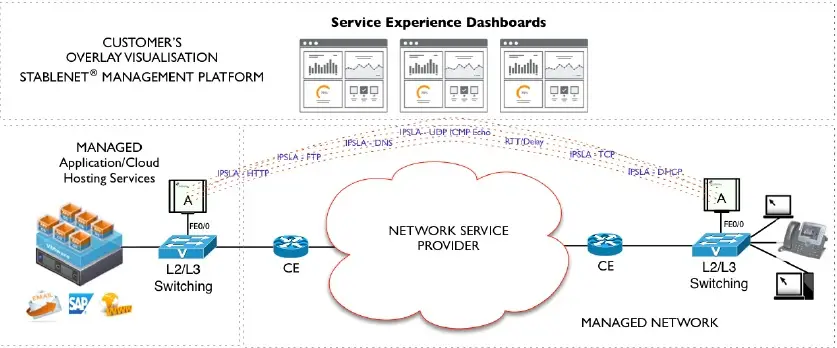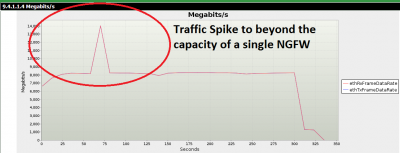In the fast-paced world of global financial services, gaining competitive advantage is a synonym to staying ahead of the curve. With banks, stock exchanges, credit institutions, investment firms still struggling in their push for innovation, fintech startups are sprouting everywhere, deploying groundbreaking technology, and questioning traditional banking. With that in mind, let’s take a look at 5 fintech trends that will undoubtedly shape the future of global financial services.
1. Accurate and precise time synchronization
There are over 100 billion microprocessors with clocks but they aren’t all displaying the correct time. As the world’s critical infrastructure and global financial markets become more digitised, this incongruence becomes more worrying.
In a distributed computing environment, it is impossible to determine what caused what unless all devices’ clocks agree and the billions of daily transactions are time stamped accurately.
Time is distributed through the global network satellite system (GNSS) which has come under criticism in recent years due to its vulnerability. A slight interference in this system could cause major disruptions in navigation and global trading activities, not to mention added complications when investigating the sequence of transactions in suspicious trading, or the proof of accurate timing needed to be MiFID II and CAT compliant.
Precise and resilient software-based time from both satellite and terrestrial sources addresses this vulnerability. Hoptroff’s Traceable Time as a Service (TTaaS®), synchronizes server clocks to UTC through both satellite and terrestrial sources. It’s more resilient, scalable, and more easily deployed requiring no additional hardware.
This article will touch upon four more fintech trends of 2023, and why accurate and precise time synchronization is the key to their development.
2. Cryptocurrency
The speed and convenience at which transactions are processed is becoming increasingly important. This has opened the door to digital, or crypto currencies and real time payments (RTPs).
Cryptocurrency transactions are recorded on a decentralised ledger or blockchain and although they’re not easily accessible to everyone, this will change as banks open their virtual doors.
CBDCs are a form of digital currency centrally controlled by national banks, backed with real money and issued over blockchain. China is already piloting their CBDC eCNY in four cities and is anticipated to introduce it fully in 2023.
Why accurate and precise time synchronization matters in cryptocurrency
While CBDCs are regulated by a country’s central bank and should therefore encourage financial inclusion, their centralised nature means certain design choices could increase anonymity for individuals involved in nefarious activities. This is why accurate time stamping at the point they are exchanged to and from real cash is so important. This is not possible without accurate and precise time synchronization.
Many central banks are already looking into the assurances offered by timestamping every transaction of CBDCs rather than only when the digital currency is exchanged for real cash.
3. The Metaverse
No one is denying the revolutionary potential of the Metaverse. As a digital 3D space designed for virtual interactions it holds the key to countless new opportunities for fintech companies. Although a boost in sales productivity may be expected as people will be able to meet face-to-face with clients from around the world in a single afternoon, added convenience comes with complications.
As cross-border teams collaborate, the online software tools through which they interact need to be reliable – this begins with precise timing synchronization. Whether it’s Google Docs or a new haptic tool, devices showing different times can cause unnecessary difficulties when collaborating through the Metaverse.
Why accurate and precise time synchronization matters in the metaverse.
The metaverse must be a real-time system over computing distributed all around the world. That can’t possibly work unless the processing and data flow are synchronized through precise timing.
4. Smart contracts
Smart contracts are locked software programs stored on a blockchain. These programs begin actions automatically following the completion of contractual obligations. Such actions could include paying both sides a sum in cryptocurrency, or simply releasing protected data to one party involved. This negates the need for an intermediary such as an escrow, in which funds would ordinarily be held by a third party until the conditions are met.
This fintech trend expects companies to further test the utility of smart contracts in 2023. Decentralised finance (DeFi) and other companies may wish to investigate how smart contracts safeguard transactional security and resilience in global financial services.
Why accurate and precise time synchronization matters for smart contracts
Cryptocurrency ensures the record of the digital ledger cannot be modified after the fact, even by the ledger owner, without it being obvious that it has been modified. Hoptroff TTaaS® can provide time for crypto traders by putting trusted and traceable timestamps in the ledger so there can be no doubt about when events happened – as it stands right now, the ledgers only prove the sequence in which events happened, not precisely when.
5. Machine Learning Operations (MLOs)
Machine learning employs algorithms to help computers and other machines understand and predict the behaviours and intentions behind digital interactions.
Innumerable figures and endless calculations drive the fintech industry meaning it will likely be a primary beneficiary of MLOs in 2023. The enormity of this data requires complex and intelligent analysis and reporting. This would be incredibly costly and time consuming using traditional rule-based computing that relies on constant human input.
MLOs are already transforming global financial services areas like risk management, fraud analysis and sales forecasting.
Why accurate and precise time synchronization matters for MLOs
Improving data reliability betters the AI model. Most data is collected in a delayed fashion, so to understand interactions between, for example, various sensors, those sensors need traceable and secure timestamps to bring the picture into focus.
Ready to learn more?
When thousands of transactions and data get processed every second, a high-level of accuracy and reliability is required for critical infrastructure services. Accurate timing solution like Hoptroff Traceable Time as a Service is ready to be rolled out without the purchase and installation of additional timing infrastructure.
(TTaaS®) is a range of network and software-based timing solutions that are simple, resilient, and cost-effective.
Whether you need the security of verifiable time for compliance, or precision timing in your IT network and business-critical documents, our obsession with accuracy will transform your business.







